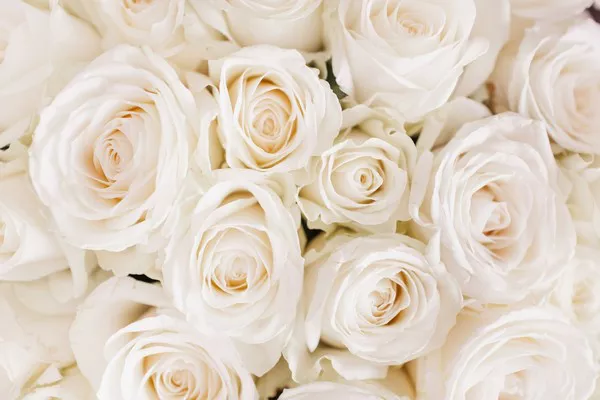Flowers have long been cherished for their beauty, fragrance, and the emotions they convey. Whether received as a gift, purchased for a special occasion, or picked from your own garden, flowers bring a touch of nature into our lives. However, the ephemeral nature of fresh blooms often leaves us wondering how to extend their lifespan. One common question that arises is whether it’s suitable to put flowers in the fridge. In this comprehensive guide, we explore the factors influencing flower preservation, the impact of refrigeration on different types of flowers, and tips for maximizing the freshness and longevity of your floral arrangements.
Understanding the Factors Influencing Flower Preservation
Before delving into the specifics of refrigerating flowers, it’s crucial to understand the factors that influence the preservation of cut flowers. Several elements play a role in determining the longevity of blooms, including:
1. Temperature: Both the ambient temperature and the temperature of the water in which the flowers are placed affect their lifespan. Extreme temperatures can lead to wilting and premature decay.
2. Humidity: The level of humidity in the environment influences the rate at which flowers lose moisture. Proper humidity levels can help prevent dehydration and maintain the turgidity of petals.
3. Light Exposure: Exposure to light, especially direct sunlight, can accelerate the aging process of flowers. Finding an ideal location with diffused light is essential for preserving their freshness.
4. Water Quality: Clean, fresh water is essential for cut flowers. Bacteria in the water can clog the vascular system of the stems, reducing water uptake and accelerating decay.
5. Ethylene Gas: Ethylene is a natural plant hormone that accelerates the ripening and aging of flowers. Avoid placing flowers near fruits or vegetables that emit ethylene gas.
Now that we’ve outlined these factors, let’s explore the impact of refrigeration on different types of flowers.
The Impact of Refrigeration on Flowers
Refrigeration is a common method used to slow down the aging process of many perishable items, but its effectiveness varies depending on the type of flowers. Here’s a breakdown of how different flowers respond to refrigeration:
Tropical Flowers: Flowers that originate from tropical climates, such as orchids and anthuriums, are generally sensitive to cold temperatures. Refrigeration may cause these flowers to develop cold damage, leading to dark spots on petals and premature wilting.
1. Roses: Roses are relatively hardy and can benefit from short periods of refrigeration, especially if they are exposed to warm temperatures. However, extended periods in the fridge may result in a loss of color vibrancy and reduced vase life.
2. Lilies: Lilies are susceptible to chilling injury, and refrigeration can cause their buds to turn brown and fail to open. It’s advisable to keep lilies in a cool room rather than the fridge.
3. Carnations: Carnations tolerate refrigeration well and can benefit from the cool environment. Placing them in the fridge overnight can extend their vase life.
4. Daffodils and Tulips: These spring flowers are best kept in water at room temperature. Refrigeration may cause the stems to become more brittle and prone to breakage.
While the impact of refrigeration varies among different flowers, there are general guidelines to follow when considering this preservation method:
5. Duration: If you choose to refrigerate flowers, keep it brief. Overnight refrigeration can be beneficial for some blooms, but extended periods may result in undesirable effects.
6. Temperature: Store flowers in the refrigerator at a temperature between 34°F to 38°F (1°C to 3°C). Avoid placing them in the coldest part of the fridge, as extreme cold can harm delicate petals.
7. Moisture: Ensure that the flowers are properly hydrated before refrigerating them. Place them in a vase with clean water, and mist the petals lightly to prevent dehydration.
8. Isolation: To minimize the risk of ethylene exposure, store flowers in a dedicated space in the fridge away from fruits and vegetables.
Tips for Maximizing Freshness and Longevity
While refrigeration can be a useful tool in preserving flowers, it’s not the only factor to consider. Here are additional tips to maximize the freshness and longevity of your floral arrangements:
1. Trimming Stems: Cut the stems at a 45-degree angle before placing flowers in water. This increases the surface area for water absorption and prevents the ends from sitting flat at the bottom of the vase.
2. Changing Water Regularly: Replace the water in the vase every two days to prevent the growth of bacteria and maintain the cleanliness of the environment.
3. Removing Foliage: Remove any leaves that will be submerged in water to prevent bacterial growth. Foliage in water can accelerate decay and reduce the lifespan of the flowers.
4. Using Flower Preservatives: Consider using commercially available flower preservatives or create a homemade solution with sugar, bleach, and lemon juice. These additives can nourish the flowers and inhibit bacterial growth.
5. Avoiding Drafts: Keep flowers away from drafts, heating vents, and direct sunlight. Drafts can dehydrate the blooms, while heat and sunlight can accelerate their aging.
6. Choosing the Right Vase: Use a clean vase that is appropriate for the size of the bouquet. A vase that is too large or too small can affect the water-to-flower ratio and impact their freshness.
Conclusion
The decision to put flowers in the fridge depends on the type of flowers and the specific conditions of your refrigerator. Understanding the needs of different blooms and implementing proper care techniques, such as trimming stems and changing water regularly, can significantly extend the lifespan of your floral arrangements. While refrigeration may be suitable for certain flowers in specific situations, it’s essential to approach this method with caution to avoid unintended consequences. By combining thoughtful care practices with a basic understanding of the factors influencing flower preservation, you can enjoy the beauty of fresh flowers for an extended period.


